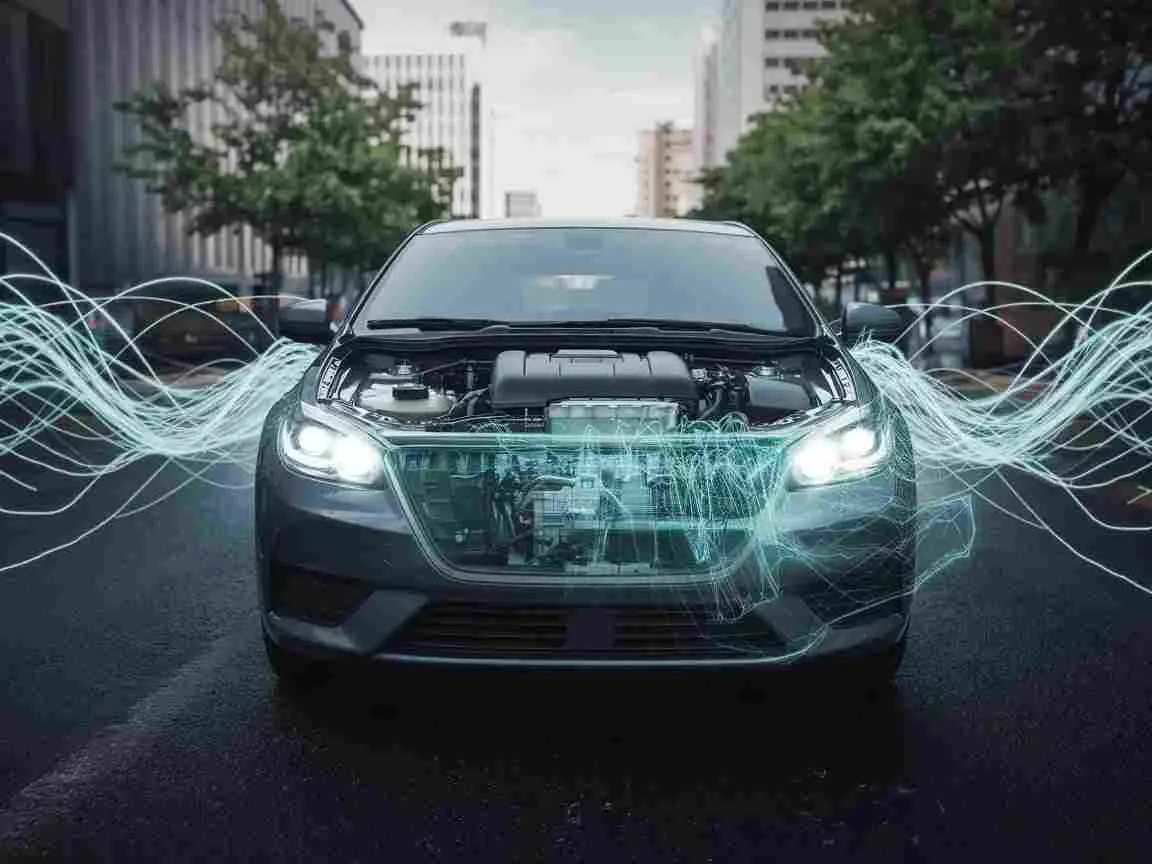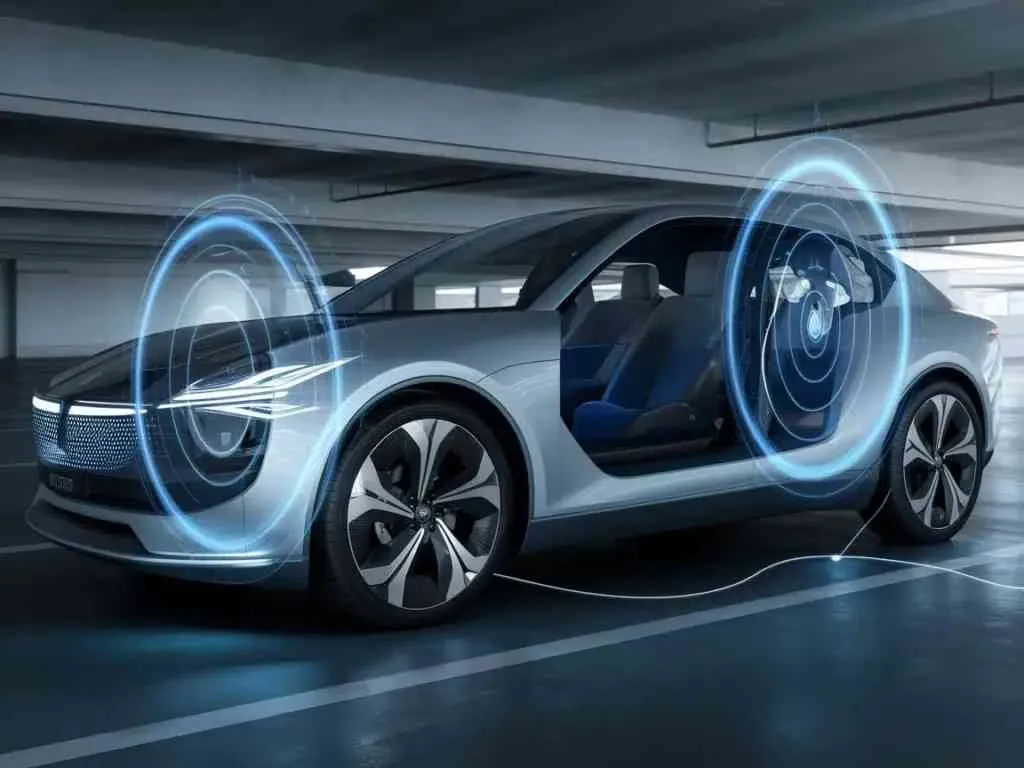Are Magnetic Fields in Electric and Hybrid Cars Harmful to Humans?

Electric and hybrid cars are changing the future of transportation. They offer a cleaner and more energy-efficient way to travel compared to gasoline-powered cars. But as these vehicles become more common, an important question has come up:
Do the magnetic fields inside these cars pose a risk to our health?
To better understand this question properly, we need to talk about it in the simplest possible way—step by step, based on what the science says and how these fields work.
Magnetic Fields in Cars: What They Are and Why They’re Important
 Magnetic fields are created whenever electric current flows through a conductor. In electric and hybrid vehicles, these fields are generated by the motor, battery, and the electrical cables connecting them.
Magnetic fields are created whenever electric current flows through a conductor. In electric and hybrid vehicles, these fields are generated by the motor, battery, and the electrical cables connecting them.
This is not unique to cars. Magnetic fields exist in many environments: near power lines, electrical appliances, and as part of the Earth’s natural field. However, the fields in electric and hybrid vehicles are stronger and closer to passengers.
These vehicle-related magnetic fields are alternating in nature (AC), not static like the Earth’s magnetic field. Because of this, researchers have studied how long-term exposure to such fields might affect human health. In particular, they are examining whether elevated exposure levels in confined spaces (like inside cars) might carry medical risks.
What Does the Research Say About Magnetic Fields?
Magnetic fields have been studied for many years, especially those coming from power lines and household devices. Several research papers have shown that long-term exposure to low-frequency magnetic fields may increase health risks, including a possible link to childhood leukemia (see: American Cancer Society).
These studies have led to growing concerns about whether similar magnetic fields inside electric and hybrid vehicles could also pose a risk.
In a technical report by the Joint Research Centre (JRC) of the European Commission, measurements taken inside electric and hybrid cars showed that, under certain conditions, the levels of magnetic fields can exceed the limits recommended by international health organizations for ongoing, long-term exposure (see: JRC Publications Repository).
Are Pregnant Women More at Risk?
 The possible effect of magnetic fields on pregnant women has raised concern. A well-known study showed a link between strong magnetic field exposure and a higher risk of miscarriage.
The possible effect of magnetic fields on pregnant women has raised concern. A well-known study showed a link between strong magnetic field exposure and a higher risk of miscarriage.
According to the research, women who were near strong magnetic sources (like large electric appliances) were more likely to experience pregnancy issues than women exposed to lower field levels (source: Nature).
Does this mean every pregnant woman driving an electric or hybrid car is at risk? Not necessarily. The study suggests there may be danger in certain conditions, but more data is needed to confirm how big the risk is.
Until more is known, it’s wise to take reasonable safety steps, especially for people who are more sensitive to health risks, such as pregnant women.
How Do Magnetic Fields in Cars Compare to Everyday Devices?
Magnetic fields are not unique to cars. Many household devices (e.g. like washing machines, hairdryers, and electric ovens) generate similar fields when in use. However, the primary difference is exposure.
Most people don’t sit next to a washing machine for hours. In electric or hybrid vehicles, the motor and battery systems that generate magnetic fields are located close to where passengers sit. This means drivers and passengers are exposed to these fields continuously for the entire duration of each ride.
So while the field type is similar, the exposure conditions in a car are very different from those around home appliances.
Why Take Precautions?
 Even though the scientific community hasn’t reached a final conclusion about the health risks of magnetic fields, major organizations like the World Health Organization (WHO), the International Commission on Non-Ionizing Radiation Protection (ICNIRP), and the International Labour Organization (ILO) all recommend caution. This is known as the “precautionary principle.”
Even though the scientific community hasn’t reached a final conclusion about the health risks of magnetic fields, major organizations like the World Health Organization (WHO), the International Commission on Non-Ionizing Radiation Protection (ICNIRP), and the International Labour Organization (ILO) all recommend caution. This is known as the “precautionary principle.”
In practice, it means that if there’s a way to reduce exposure, especially when the cost and effort are low, we should do it (source: ICNIRP).
Let’s say you spend long hours in a vehicle that generates a strong magnetic field. If there’s even a small chance that this exposure could be harmful over time, it makes sense to try to reduce it. Simple steps, like adjusting where you sit, or how often you drive, can make a real difference.
Today, newer technologies such as SafeFields offer ways to actively lower exposure inside the cabin. These tools make it possible to enjoy the benefits of electric and hybrid cars while also minimizing any potential risk.
Awareness and Caution Are Important
Magnetic fields from electric and hybrid cars raise important safety concerns. Do you think these risks should influence which car you choose? Are you taking any steps to reduce exposure for yourself and your family?
As we adopt new vehicle technologies, we must also recognize and address their potential health effects. Being aware of these issues allows you to make more informed decisions about using electric and hybrid cars safely.

